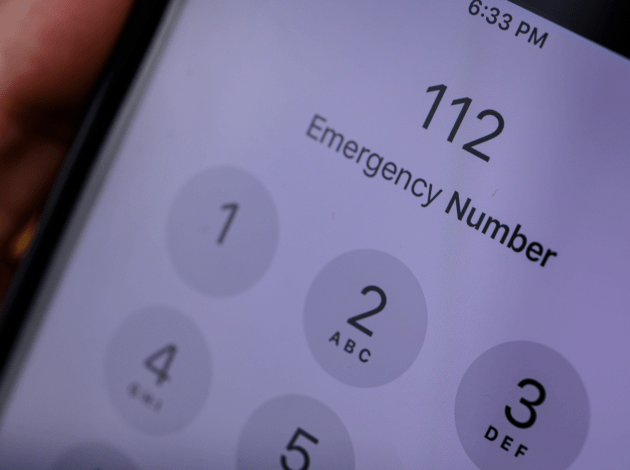Language:

What to Do in the Event of an Extremist or Terrorist Attack: Practical Tips for Your Safety
Source photo: Vecteezy
We read about it in the news, see it on television, and sometimes it comes uncomfortably close: an extremist or terrorist attack. But imagine it suddenly happens in your own environment. Would you know what to do? Most people have never really thought about this. The very idea is frightening, which is why we often push it aside. Still, it is important to know what you can do, because in an emergency, every second counts.
What makes the situation even more urgent is that the Netherlands is currently at threat level 4 according to the Terrorist Threat Assessment Netherlands (DTN) by the National Coordinator for Counterterrorism and Security (NCTV). This means there is a substantial terrorist threat and a real chance that an attack could occur in the Netherlands. An attack is therefore not just something that seems far away, but is considered plausible by the authorities. In this blog, I will guide you step by step through what you can do in the event of an extremist or terrorist attack, so you are better prepared should it ever be necessary.
It is wise not only to think about what you would do during an attack, but also to prepare yourself somewhat in daily life. Be aware of your surroundings, pay attention to emergency exits in public buildings, and discuss with family or colleagues what you could do in an emergency. By considering this in advance, you increase your own resilience and will act more quickly and thoughtfully if it ever becomes necessary. This also means being alert to signs that could indicate potential danger.
Recognizing suspicious situations or behaviors
An important part of preparation is learning to recognize suspicious situations or behaviors. Sometimes there are subtle signs that may indicate potential danger, such as someone acting unusually nervous, repeatedly observing the same place, or carrying unusual objects. People who behave noticeably differently from others, or who try to access restricted areas without a clear reason, can also stand out.
At the same time, it is important to realize that such signals do not always mean there is an actual threat. Distinguishing between innocent behavior and a real threat is often difficult. Still, if you don’t trust something, it’s wise to follow your instincts and report it to the appropriate authorities or people nearby. Always indicate that you are not sure if it is a suspicious situation, but that you would rather report it than regret doing nothing later. In this way, you contribute to the safety of yourself and others, without making unnecessary judgments.
The paralyzing power of fear
Recognizing a suspicious situation or experiencing a threatening moment can trigger intense emotions. Upon hearing an explosion, gunshots, or seeing panic around you, fear often takes over completely. Fear is a primal instinct that prepares our body for danger. Your heart rate increases, your breathing quickens, your muscles tense, and your senses become sharper. Mentally, you may become confused, panic, or even freeze. You may no longer think clearly, and your first reaction is often to flee or freeze. This is completely normal, but it is important to know that you can learn to recognize this fear and, to some extent, control it.
What does fear do to your body and mind?
Fear activates the so-called ‘fight-or-flight system’ in your brain. Your body produces adrenaline, allowing you to react more quickly. This can be life-saving, but it can also prevent you from thinking logically. You may start sweating, trembling, or even feel nauseous. Mentally, you may experience tunnel vision: you only see the immediate danger and forget everything else around you. Some people go into a state of shock and can no longer move or react. That’s why it’s important, if possible, to consciously take a moment to breathe and focus on what you need to do.
When is action needed?
It’s important to realize that not every suspicious situation requires immediate action. But if you see clear signs that an attack is about to happen-such as someone with a weapon, suspicious behavior, or a threatening situation-it is crucial to take action. Your alertness and quick response can make the difference. Sometimes, by acting quickly, you can even prevent an attack or help more people escape the area safely. This may include warning others, alerting emergency services, or making sure you and others are safe.
What can you do if you suspect an attack?
If you suspect that an attack is imminent, try to distance yourself from the suspicious situation as quickly as possible. Warn people in your immediate vicinity without causing panic. Call emergency number 112 immediately and report as clearly as possible what you have seen: describe the person, location, time, what exactly you observed, and any details such as vehicles or weapons. Stay in a safe place yourself and, if possible, wait for instructions from emergency services. Your information can be vital for the police and emergency responders.
What can you do during an attack?
When danger actually strikes, the most important thing is: ensure your own safety. Try to find a safe place as quickly as possible and avoid panic. If possible, remain calm and keep an overview of the situation. Only when you are sure you are out of immediate danger should you consider further steps. It is understandable that you want to help, but never put yourself at unnecessary risk. By staying calm and carefully observing what is happening, you can later-if the situation allows-contribute responsibly to helping others. In such chaotic and unpredictable situations, there is no fixed script for civilians. Every attack and environment is different, so you must always act according to your own judgment and the circumstances. The most important thing is to do what seems most sensible and safe at that moment, both for yourself and for others.

What should you report to 112?
Once you are safe and the situation allows, it is important to provide the right information to emergency services. Every detail can be crucial. For example, if you notice that a perpetrator is wearing a distinctive red jacket, this can help the police identify and apprehend the suspect more quickly. Providing such specific details can make a real difference in how emergency services respond. On the other hand, it is less relevant to report that it is raining or that there is heavy traffic, unless this directly affects the situation or accessibility for emergency services. Here are some examples of details you can report to 112:
- Location: Where exactly are you? Street name, house number, landmarks.
- What is happening? Describe the situation as concretely as possible.
- Number of perpetrators: How many people are involved?
- Appearance of perpetrators: Clothing, skin color, height, distinctive features.
- Weapons: Do you see weapons? If so, what kind?
- Victims: Are there any injured? How many?
- Movement: In which direction did the perpetrators flee, if applicable?
Stay on the line until the operator tells you that you can hang up. Your information helps emergency services respond more quickly and effectively.
What you should especially not do during an attack
In addition to using your mobile phone wisely (see above), there are other things you should avoid during an attack. Do not go investigating or attempt heroic acts if you are not trained for it. Also, do not spread false or unverified information, for example via social media, as this can cause panic or hinder emergency services. Always focus on your own safety and that of others, and leave the work to the professionals once they arrive.
Other important tips and points of attention
Finally, there are some general things to keep in mind during and after an attack. Above all, stay calm, as panic helps no one. Always follow the instructions of emergency services such as the police or fire brigade if they are present. Pay close attention to your surroundings, as there may be multiple threats and the danger may not yet be over. Use your phone wisely: only call if it is really necessary, so that lines remain free for emergencies. Also, be careful when sharing information on social media; incorrect or hasty messages can cause panic or hinder emergency response.
In tense or chaotic situations, people often refer to examples from movies or series. The image portrayed in the media can influence our idea of heroic action. But how realistic is that, really?
Movies versus reality: heroes exist, but be realistic
We all watch movies and series, and it seems that in recent years there have been more and more films focusing on extremist or terrorist attacks. In these movies, it is often the main character who, in spectacular fashion-sometimes with lots of special effects-manages to thwart the attack. These scenes are exciting, but reality is unfortunately different. In real life, there are rarely people who unintentionally bring such situations to a good end as heroes. Of course, there will always be exceptions, but it is important to realize that taking reckless risks usually does not lead to a good outcome.
Think carefully before you take action. In some situations, there may be people present with a background as a soldier, police officer, or firefighter. They are trained for these kinds of emergencies and often know what to do. But even if you have no professional experience, you can still contribute a lot in a crisis by working together with others. Connect with people around you, share information, try to calm each other, and support one another where possible. By working together, you increase the chance of a good outcome and can help each other stay safe and make rational decisions. If you notice someone taking the lead, for example due to experience or calmness, follow their instructions and support them where possible. In this way, you may be able to prevent or limit the consequences of an attack together. But remember: safety always comes first, and this is not a movie-your life and that of others is at stake.
What can I offer you as a Radicalization and Terrorism Expert?
This blog was about what you can do in the event of an extremist or terrorist attack. As a Radicalization and Terrorism Expert, I am happy to help you, your organization, or your team to be better prepared. I offer training, workshops, and advice in which you learn how to recognize signs of radicalization, how to act effectively and safely in threatening situations, and how to increase resilience within your organization or environment. Would you like to know more about what I can offer you as a Radicalization and Terrorism Expert, or do you need personal advice or support? Feel free to contact me. Together, we will ensure that you and those around you are stronger and safer in an increasingly complex society.
